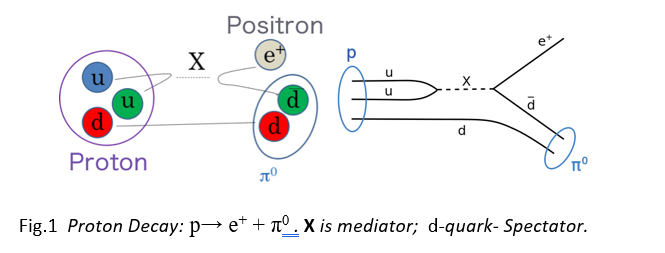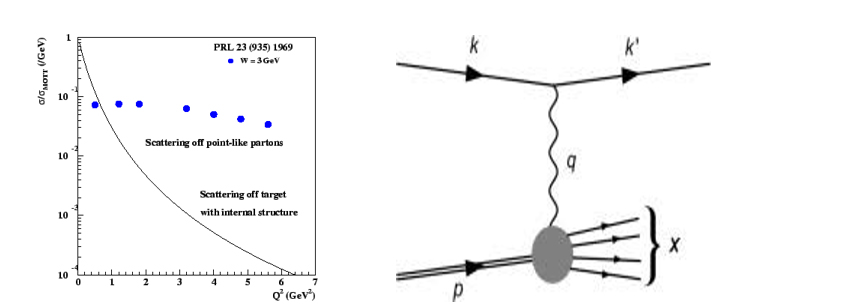Enormous progress in Physics has been seen in the twentieth century. First half of the century is dominated by Einstein Theory of Relativity and development of Quantum Mechanics. In the year 1905 Einstein put forward his Special theory of Relativity and took another 10 years to publish his General theory of relativity to include Gravity which is published in the year 1915. The birth of Quantum theory starts with the Planck’s theory of black body radiation in 1900. Einstein took the Planck’s theory to describe photoelectric effect and predicted the quantum of light (photons) which behaves like particle. Subsequently Niels Bohr, Louis de Broglie, Erwin Schrodinger and Paul M. Dirac, advanced Planck’s theory and developed the theory of quantum mechanics as a mathematical application of the quantum theory with matter and wave equivalence with a probabilistic view in contrast to Classical theory.
The 2nd half of the twentieth century observed the rise of the Particle Physics. A huge number of particles are identified in high energy accelerators. The systematic study of the properties of these zoo of particles gives us the knowledge of basic interactions and their properties which in turn contribute to the understanding of basic laws of nature. First attempt came from Gell Mann and Zweig in 1964 in Eightfold way scheme where the known Mesons, Baryons and Octet baryons are classified in a geometric pattern according to the quantum numbers and suggested the quark model. The classification can be compared to the classification of elements in Mendeleev’s periodic table with basic difference in quantum numbers and the table is replaced by geometrical patterns like hexagon, triangle etc. These quantum numbers are internal quantum numbers which manifest the underlying symmetry of nature. By the early 1930s, physicists thought they had a complete picture of the constituents of matter with electrons, protons, neutrons, neutrinos and their corresponding antiparticles but in 1936 with the discovery of the muon, a heavier version of the electron comes as big surprise to physics community. Particle collision is fundamental tool for studying elementary particles. The first colliding lepton beam facilities were built in the early 1960s. Subsequently new particle colliders were planned and built, leading to milestone discoveries on November 1974 with observation of the J/Ψ particle, a new unstable state of matter of charm quarks (c-family) simultaneously at SLAC and Brookhaven National Laboratory (BNL) at USA which is termed as ‘November Revolution’. The discovery of the Upsilon (Υ) particle (b-quark family) has been reported at Fermilab in 1977 by the CFS (Columbia-Fermilab-Stony Brook collaboration) E288 experiment. Large particle accelerators of the 1980’s, and the other discoveries established the Standard Model of elementary particles as a well-tested physics theory. As physicists continued to collide the particles at ever higher energies, they discovered more and more particles. A new era of particle physics experiments started with the Large Hadron collider (LHC) at CERN. Discovery of Higgs particle reported in 2012. The experiment is focused to search answers to very fundamental questions like origin of mass, dark matter, Primordial plasma and matter antimatter asymmetry.
Particle Physics/ Nuclear Physics as career:
The career in Particle Physics or High Energy Physics is very exciting. It can be divided into two categories like Theoretical and Experimental. For both the areas the knowledge on quantum field theory (QED), Gauge theory, basics of Particle Collision mechanism are required. The High Energy Physics (HEP) landscape has changed significantly over the past few years. This field involves studying the basic constituent of matter and radiations. The other closely related areas are AstroParticle physics, Early universe, Big Bang nucleosynthesis (study to search for origin of creation of the universe and abundance of different elements we observe in nature), Dark matter, Neutrino Oscillations, CP-violation. Weakly Interacting Massive Particles (WIMPs), Exotic particles, Multiquark states. The area also extended to study the quark Gluon Plasma (QGP), a new state of matter. Particle physicists can find positions in International laboratories working with high energy colliders or at a higher education institute that excels in basic sciences. The United States Department of Energy funds Brookhaven National Laboratory, which employs about 3,000 scientists and hosts 4,000 guest researchers annually from different countries. Particle physicists are able to engage in extensive high-energy research here with their Relativistic Heavy Ion Collider (RHIC), the biggest and most powerful particle accelerator other than the LHC. The RHIC is designed for quark-gluon plasma research. The LHC is housed by the European Organization for Nuclear Research, which employs 2,600 regular staff members, and 7,931 scientists and engineers from different universities and research facilities. Research at CERN mainly focuses on particle physics starting basic structure to super symmetry and physics beyond the Standard Model. Some experimental evidence, including non-zero neutrino masses, baryon asymmetry of the Universe, dark matter and dark energy, indicates the model is still not complete. The situation requires development of theoretical models to explain the specified phenomena, and design of appropriate experimental setups to test these models. India became an associate member of CERN in 2017. A significant contribution has been done by Indian scientists to the construction of LHC, CMS and ALICE experiments with more than 400 scientists from India. The Future Circular Collider Study (FCC) is developing designs for a higher performance particle collider to extend the research of LHC. In India there are many institutes which provide good opportunities in high energy physics research including Astrophysics and Cosmology such as IISc, HRI, TIFR, SINP, VECC, IACS and others. Apart from that there are opportunities in colleges and universities as faculties. Most young high energy physicists appeared eager and optimistic about careers in academia and research however for those who want to work outside of academia may opt for Programming, data analysis, statistical analysis, and oral communication which are among the most applicable skills that were originally developed during High Energy Physics (HEP) training.
Nuclear Physics explores nuclear properties in terms of the behavior of its constituents. Rutherford’s large angle scattering experiment in 1911 gives us the idea about nuclear structure and considered it as the discovery of protons. In 1932 neutron were discovered. It is known by then the nucleus consists of protons and neutrons. A number of models for the nuclear structure have been suggested since then to understand the interaction among nucleons which makes the nucleus stable. Till we have challenges in describing atomic nucleus which is a self bound and a complex many body system. Structure of nucleus yet is to be revealed with components of subatomic entities quarks, gluons and their interactions. This is an interface of nuclear and particle physics. A number of theoretical works are going on the areas overlapping with Particle Physics such as exploring the structure of Exotic nucleus (proton and neutron rich nucleus), stellar physics, Big bang Nucleosynthesis, State of matter in Early universe, Quark-gluon Plasma. Hyper-nuclei are strange quark containing nuclei which transform the nuclear matter to up, down and strange quark combinations. These nuclei are experimentally detected and lots of studies are going on hypernuclei now a day. With a new kind of nucleus immense possibilities are there both in theoretical and experimental applications. Nuclear physicists are working with material science in superconductivity for studying cooper pairs and possibility of single cooper pair tunnelling to individual quantum states. This is absolute new research going on. Nuclear Power technology is moving fast. India has set a target of increasing nuclear power generation three times by next 10 years. Clean energy is needed for the hour with environmental crises all over the world. The complete microscopic description of the fission process and the nuclear reactions remains a computationally demanding task. Positron imaging processes where positron-emitting isotopes are used to tag tracer particles both for studying real-time flow in industrial processes and for diagnosis in hospitals. Opportunities of Nuclear Physics in medical science and health care systems are immense. Treatment with positron therapy and with proton, neutron, heavier elements are becoming more and more widespread along with radiation and MRI. Nuclear Physics is the most important candidate for the study of the environment. The use of nuclear equipment are growing for national safety and security purposes. A number of research institutes in India like SINP, RRCAT, DAE, VECC, IIMS recruits nuclear scientists.
Conclusions
The research and application in Nuclear and Particle Physics have entered a new era for the last few years. In all forward move, we need innovation, theory, conception and technique. In Undergraduate and PostGraduate studies in the subject, students develop skill in conceptual and experimental techniques. The opportunities are immense but it should be always remembered that opportunity favours the prepared mind. Apart from that for a student of physics, doing science is a joy which can never be ignored and I quote from a saying of great scientist Henry Poincare ‘Scientist does not study nature because it is useful; he studied it because he delights in it, and he delights in it because it is beautiful. If nature were not beautiful, it would not be worth knowing, and if nature were not worth knowing, life would not be worth living’. Key words to success in science.


















